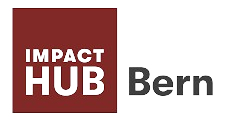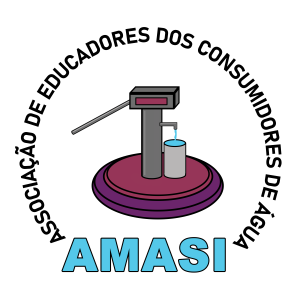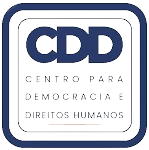Use Impact Management to create real added value.
Changetrackers supports you in evidence-based planning, monitoring, improving and communicating the social impact of your projects.
Because facts and stories can back up your gut feeling. And because your human and financial resources deserve to be used mindfully and effectively.
Who is
Impact Management for?
Social Enterprises and Impact Companies
Non-profit Organisations (NPOs)
Foundations
Public administration entities
Assuming social and ecological responsibility and creating real social value is a must for many companies today.
How do we prove that we are meeting these requirements while being mindful of our current resources?
Despite your increased awareness and great commitment, you may find that your internal resources are often insufficient for effective impact management.
Changetrackers is committed to providing you with targeted support throughout all stages of impact management, ensuring that your resources achieve the best possible results. My approach is pragmatic, thoughtful, and focused on the long-term.
- Do you need to report the social impact of your project or secure funding for the next phase?
- Would you like to gain a deeper understanding of the factors that contribute to the success or failure of your projects? And would you rather rely on factual evidence rather than intuition, to develop effective strategies and achieve your goals with confidence?
- Would you like to work together with your team to ensure that your daily activities are in line with your goals? And do your team members have a shared understanding of what those goals are?
How does
Impact Management work?
Planning impact
- Understand challenges and needs
- Set objectives and define impact goals
- Develop impact logic and impact model (e.g. Theory of Change/ IOOI / Impact Matrix)
Reviewing impact
- Develop indicators
- Plan data collection
- Collect the data / gather information
- Analyse the data / evaluate information
Improving impact
- Promote a constructive culture of failure
- Regularly reflect on what worked, what did not and why
- Revise & adapt the ToC, assumptions, activities, impact logic, logframes, matrix, etc.
- Discontinue the project completely if necessary
Communicating impact & findings
- Define addressees, goals, content, timing, formats
- Communicate impact, with transparency and credibility
- Share the findings both internally and externally using reports, factsheets, websites, videos, workshops, etc.
Case examples:
How Impact Management can make a difference.
Are you ready to use the possibilities of impact management?
Trained
Impact Management Expert
About me:
I commit to.. staying curious, keep learning and keep growing. Always striving to be more interested than interesting.
I have always been drawn to questions rather than answers. And I’ve always been the sceptical child who questioned the things I heard and saw.
During my time in international cooperation, I learned a lot and had the opportunity to work with many incredibly dedicated people.
Too often, however, I felt that current structures and hierarchies prevented us from planning projects and activities in a demand-driven way, or from adapting them during implementation on the basis of new findings. It is understandable that M&E / MEL / MEAL is therefore a “red rag” for many and the topic is generally neglected.
But I am convinced that the methods and tools can be so helpful! Both professionally and privately, I have (mostly unconsciously) applied the principles of monitoring, evaluation and learning: observe, question, understand and adapt. I love to embrace discomfort, to look where it is uncomfortable. To explore where change can be initiated.
Today, I find myself passionate about impact management. It’s the professional field where I can combine what I love to do with what I do best: fostering continuous curiosity, evidence-based learning, and the clear commitment to assess whether our current thought patterns and actions are leading us toward our desired destination.
Impact management doesn’t have to be complicated
I do not claim to set up scientifically sound, complex studies. This is usually neither sensible nor feasible with the resources available.
My aim is to work with you to develop models, processes and instruments that are realistic, pragmatic and relevant to your plans and objectives.
What I always emphasise and am committed to however, are principles and values that are aligned with efforts for more diversity, equality, inclusion (DEI) and decolonisation.
Do you let me convince you that effective impact management is more than just a token exercise, that it can actually be useful and even fun?

My many years of work experience both in Switzerland and abroad are rounded off by certified skills acquired through the
- CAS Impact Management for NPOs from the CEPS
- Training and Certificate “Reporting with the GRI Standards” by Acting Responsibly
I am a member of the Impact Hub Bern and the international networks IC-Hub, M&E Academy, Program Learning & Adaptive Management (PLAM) and Decolonising Advisory Community (DAC), with which I regularly collaborate, exchange ideas and learn new things.
People I have
supported













How does the
collaboration work?
Whether you need a long-term partnership or short-term, project-based support: Contact me for a no-obligation introductory meeting to find out how Changetrackers can best support you.
Introductory meeting (20min)
- Choose a suitable day and time in the calendar
- During a phone call we see if I am the right person for you. Simple, with no obligations.
Initial consultation (1 hour)
We meet and
- clarify where you stand in terms of impact management
- discuss your goals in detail
- outline the key points of a potential collaboration
Offer
- Based on step 2, I prepare an offer presenting scope and costs
- You decide if you agree with the offer
Realisation
- I’m glad you’re on board!
- Together, we take your impact management to the next level
Frequently asked questions (FAQ)
about Impact Management
Contact me

Nora Julien
nora.julien@changetrackers.ch
Changetrackers GmbH
Murtenstrasse 212
3027 Bern
